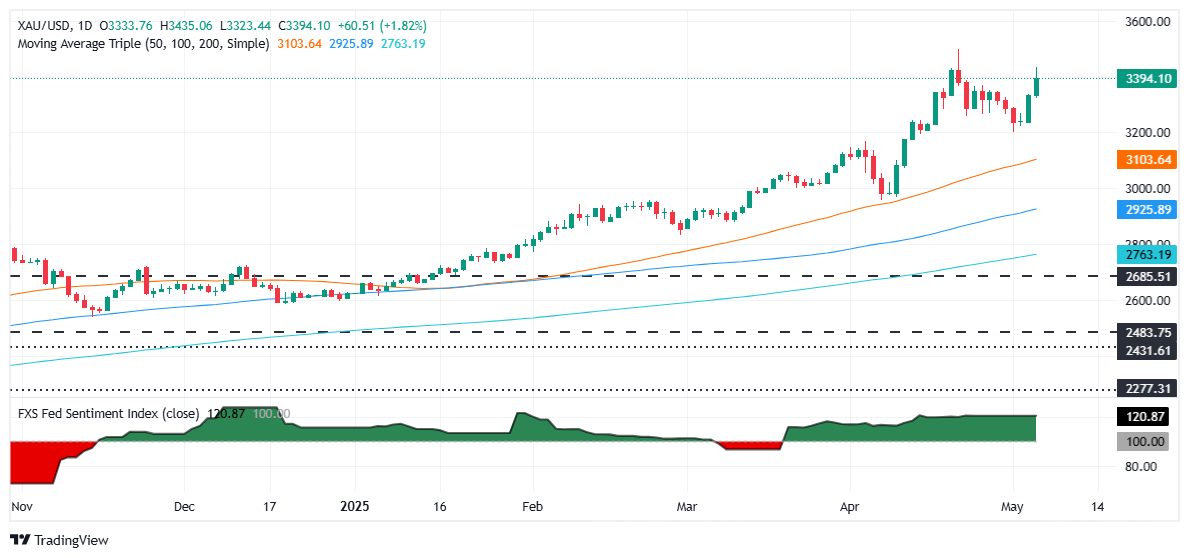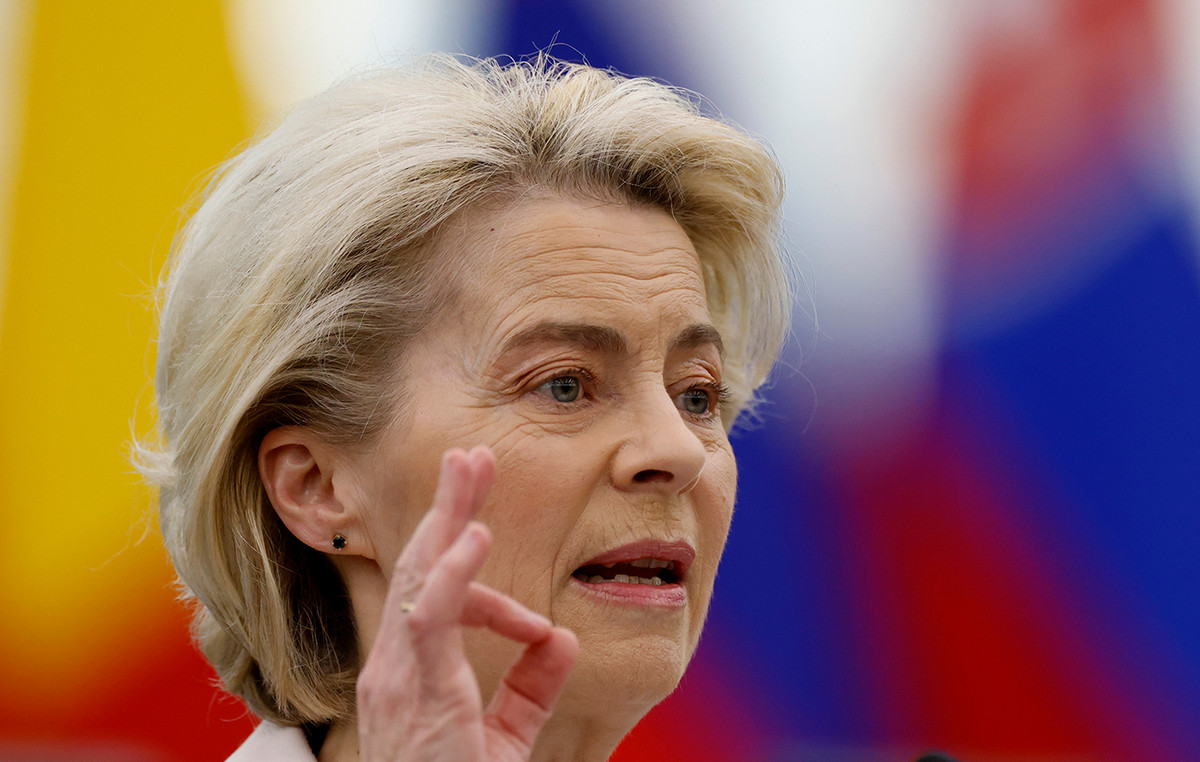- The renewed conflict between India and Pakistan drives the flows to the refuge in gold, weighs on the feeling of Wall Street.
- Trump indicates flexibility in tariffs; The markets ignore the optimistic tone of the US Treasury Secretary.
- The operators expect the FOMC’s decision and Powell’s press conference in search of clues about the management of politics.
Gold shot at a two -week peak on Tuesday, since Chinese markets resumed operations after a long holiday and concerns about US commercial policies. Geopolitical risks also promoted precious metal, with a new conflict emerging between Pakistan and India. At the time of writing, the XAU/USD quotes at $ 3,400, increasing more than 2.70%.
Wall Street closed Tuesday’s session with losses while operators would say the latest comments from US President Trump about commercial policies. He said he would dictate tariff levels and acknowledged that it would be flexible in fixing rights. Investors dismissed previous comments from the US Treasury Secretary, Scott Besent, on possible agreements with 17 countries.
Bloomberg reported that India attacked terrorist camps in Pakistan, but not military sites. The Indian government said: “Military attacks against” terrorist camps “in Pakistan, an expected movement after he promised reprisals for a militant attack last month in Kashmiro that killed dozens of tourists.”
Meanwhile, Pakistan’s chief of defense has warned about an “imminent” confrontation with India as tensions increase by a dispute over water rights of rivers and accusations around a recent terrorist attack in Kashmir.
In addition, the US trade deficit was expanded in March, revealing the US Department of Commerce while all eyes are put in the decision of the Federal Open Market Committee (FOMC). The Fed is expected to maintain unchanged fees, as investors anticipate, which will be attentive to the press conference after the decision of the president of the Fed, Jerome Powell.
What moves the market today: the price of gold capitalizes the fall in the yields of the US Treasury bonds.
- The fall in the yields of the US Treasury bonds promoted gold prices. The 10 -year Treasury bonus performance is falling five basic points to 4,298%. At the same time, the real yields of the US fall three PB to 2.038%, as shown by the yields of the US Treasury values protected against inflation at 10 years.
- The US Department of Commerce revealed that the commercial balance was $ -140 billion, exceeding expectations, at $ -137 billion, and exceeded the February figure of $ -123.2 billion.
- The US economy remains solid, as revealed by the non -agricultural payroll report last week and the solid publication of the ISM services of the ISM on Monday. However, increased tensions in the Russia-Ukraine conflict, war between Israel and Hamas, and hostilities between India and Pakistan could cancel the dependence of operators in macroeconomic data, favoring the feeling of the market.
XAU/USD technical perspective: The price of gold is prepared to challenge the $ 3,350 support
The price of gold is ready to extend its profits in the midst of a bad atmosphere in the market. The confirmation of a graphic pattern of two candles “Bullish Harami” sent the Xau/USD to a strong rebound, although the advance was driven by geopolitical tensions and the reopening of China’s markets on Tuesday.
Once the Xau/USD exceeds the $ 3,400 mark, a new $ 3,450 test is on the horizon. The next stop would be the historical maximum of $ 3,500. On the contrary, if the price of gold falls below $ 3,400, the following support would be the $ 3,350 figure. In case of greater weakness, the next line of defense of buyers would be $ 3,300.

FAQS GOLD
Gold has played a fundamental role in the history of mankind, since it has been widely used as a deposit of value and a half of exchange. At present, apart from its brightness and use for jewelry, precious metal is considered an active refuge, which means that it is considered a good investment in turbulent times. Gold is also considered a coverage against inflation and depreciation of currencies, since it does not depend on any specific issuer or government.
Central banks are the greatest gold holders. In their objective of supporting their currencies in turbulent times, central banks tend to diversify their reserves and buy gold to improve the perception of strength of the economy and currency. High gold reserves can be a source of trust for the solvency of a country. Central banks added 1,136 tons of gold worth 70,000 million to their reservations in 2022, according to data from the World Gold Council. It is the largest annual purchase since there are records. The central banks of emerging economies such as China, India and Türkiye are rapidly increasing their gold reserves.
Gold has a reverse correlation with the US dollar and US Treasury bonds, which are the main reserve and shelter assets. When the dollar depreciates, the price of gold tends to rise, which allows investors and central banks to diversify their assets in turbulent times. Gold is also inversely correlated with risk assets. A rebound in the stock market tends to weaken the price of gold, while mass sales in higher risk markets tend to favor precious metal.
The price of gold can move due to a wide range of factors. Geopolitical instability or fear of a deep recession can cause the price of gold to rise rapidly due to its condition of active refuge. As an asset without yield, the price of gold tends to rise when interest rates lower, while the money increases to the yellow metal. Even so, most movements depend on how the US dollar (USD) behaves, since the asset is quoted in dollars (Xau/USD). A strong dollar tends to keep the price of gold controlled, while a weakest dollar probably thrusts gold prices.
Source: Fx Street
I am Joshua Winder, a senior-level journalist and editor at World Stock Market. I specialize in covering news related to the stock market and economic trends. With more than 8 years of experience in this field, I have become an expert in financial reporting.







